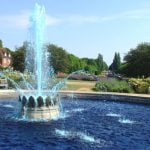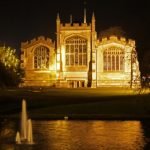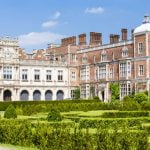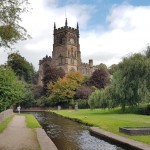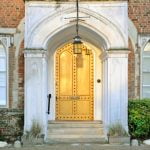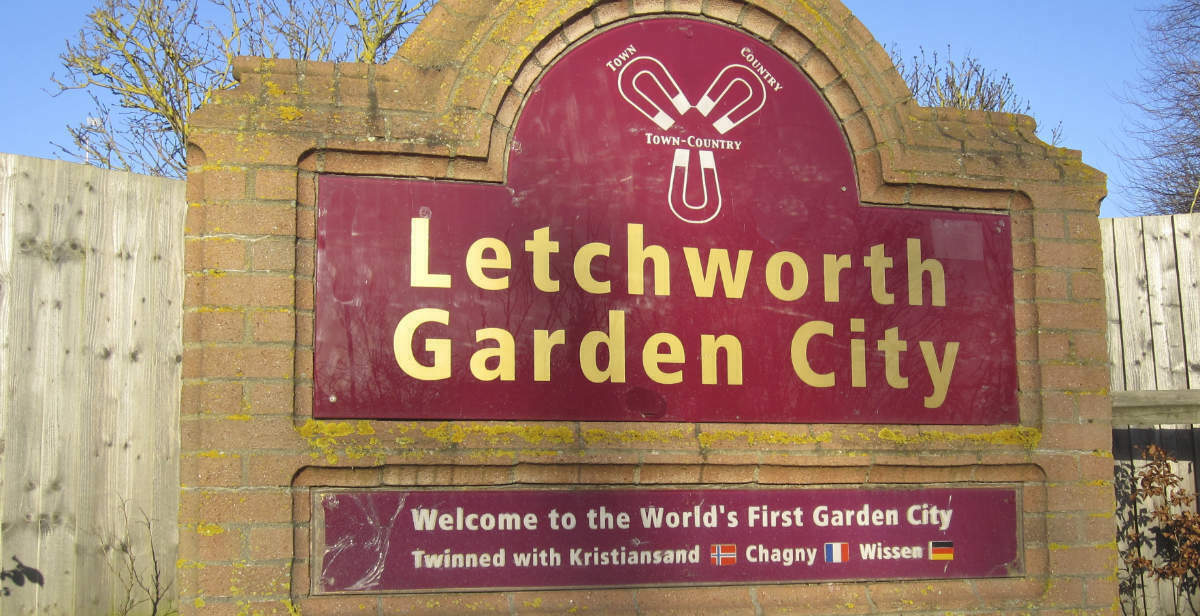
Letchworth Garden City – The UK’s first!
The UK’s First we hear you ask. Well, the picturesque Hertfordshire town of Letchworth Garden City, was once simply Letchworth, but in 1903 it became the first designated Garden City in the UK. How’s that for a claim to fame!
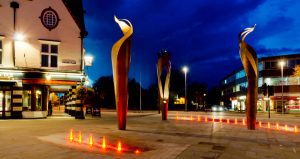
Image: Charles Bowman/Shutterstock.com
However, as you will read it has a lot more going for it than a quiz question and today is home to around 30 thousand people. It predates the Domesday book and eventually thanks to the work of the social reformer named Ebenezer Howard it became the blueprint for a number of similarly smaller but beautifully formed English towns. It even has a historical interest in traffic planning which we will get to later.
Anyway, let’s explore the gorgeous garden city of Letchworth to see if it makes a good destination for our staycation plans. Could it be an ideal holiday destination? There’s only one way to find out and it starts long ago in an England far far away…
The Early Days of Letchworth Garden City
The early history of Letchworth goes back to before it ever became a garden city. It is mentioned in the Domesday Survey as a town that already had 15 households. That’s not very big, but it is also big enough to be an established town at this time. So we can say that Letchworth existed in 1086, that it was one of a Hundred, which was a hundred towns grouped together to make feudal rule easier. It was in the Hundred of Broadwater in Hertfordshire County.
Letchworth had only one registered owner at that time. His name was Robert Gernon. Robert owned 9 villagers (rent), 4 cottagers (which meant something different in 1086), one slave (yes, the English kept slaves), and one priest. The priest is important. Only towns wealthy enough and large enough to facilitate a parish church had their own priest. This hints that the town was successful even in those early days. The land was worth 6 pounds in annual revenue to the owner.
As unlikely as it seems, we can trace this town (established in 1903) all the way back to the Romans. The Romans came to Britain in 43 AD and took the entire southeast in the first five years of occupation. Recent years have revealed evidence of Roman life around town. Excavations of Blackhorse Road from 1957-1974, and of High Avenue in the late nineties, have revealed pottery, glass, and a fourth-century coin. The excavations detail an abandoned Bronze Age settlement too, which stood here before the Romans arrived. Roman finds are frequently reported in the High Avenue and Sollershott West areas.
The Pre-Roman settlement in the area was a Bronze Age Hillfort. The elevation of the town made it a defensible position for the tribes of old. The hill fort dates from 700 BC and stood on Wilbury Hill. The tribes strengthened the fort in 400 BC and still occupied it when the Romans arrived. A late Iron Age settlement exists in the fields near Norton Village.
The name of Letchworth translates to a farm behind a fence. It may have started as a place of safety for the tribes living in the hill fort, who needed farmland to survive. When attacks came, the townsfolk would flee into the fort.
The Medieval Period
Unlike several of the towns and cities of a similar nature, Letchworth Garden City didn’t exist during the Middle Ages – the city was still the large town of Letchworth right up until 1903. Historians suspect the parish church opened in the 12th century, but we do not know who the church worshipped before it was rededicated to St. Mary during WWI.
In 1801, the town had a population of 67 people. This had only increased to 96 people after another hundred years passed. Ebenezer Howard started planning his city expansion in 1898 when he laid out the initial plans in a well-written book.
Let’s pause the history for a moment. The town remained sleepy and quiet until 1903, so we’ll discuss some trivia about Letchworth before we move into the growth period.
A Bit of Letchworth the Garden City Trivia
In this section, we like to donate some time to finding some interesting facts so we can all we can learn a little more about the location or become quiz masters. Here are all the fun and not so fun things we found out about Letchworth Garden City along the way:
- Among Ebenezer Howard’s previous occupations, he tried to become a farmer in the USA and even spent time as a stenographer in Chicago. He was the son of a shop owner based in London. He later found work as a parliamentary reporter upon his return to the UK. He was an avid fan of George Bernard Shaw.
- Letchworth was the first Garden City. Howard planned it to have zoning, at that time an unheard-of concept. He planned transport links, recognising this as a major polluter. He even added in a green belt area outside the city. He was ahead of his time.
- The town was revolutionary in another way: all money made would return to the town, not go to a wealthy landowner.
- Letchworth’s location is pure chance. The Alington Estate came up for sale at the same time as Howard was seeking a plot.
- They designed Letchworth for 30k souls, which it still holds (roughly) to this day. That’s some incredible foresight and planning.
- The UK’s first roundabout for traffic opened here. Frankly, we would keep that one quiet.
- Letchworth is home to the famous black squirrel. Scientists attribute the black coat colour to a mutant gene that seems to thrive in Hertfordshire.
We will end this section on the weird note of black squirrels and head back to the main event. We left off with the medieval period, so let’s hop back in at the Industrial Era.
The Industrial Revolution in Letchworth
The Industrial Revolution wasn’t so industrial in Letchworth. In fact, it bypassed the town altogether. Before Howard built Letchworth Garden City in 1903, it had less than one hundred residents. He wrote the whole idea for the town in a book named To-Morrow: A Peaceful Path to Real Reform. The book would become the template for multiple cities since. It incorporated the green belt idea at its core, an idea popularised by the London overspill and country integration plans.
Howard purchased the Letchworth Hall Estate in 1903. It was 3,818 acres and cost £155k. It started with a temporary halt on the Great Northern Railway line which became a station proper in 1912. Although purchased in September 1903, the first houses didn’t arrive until July the following year. After this, it was a steady push to hedgerows lining streets that fit seamlessly into the countrified surroundings.
The town didn’t legally receive its name until 1919. The railway station was named for the town but the line was later renamed to shorten it to Letchworth. A public hall opened in 1906 in memory of Ebenezer’s wife, who died in London in 1904 shortly after moving into their home in the town. The Letchworth corporation ran several competitions among architects to find the cheapest housing models. In 1905, their exhibition to show off some of the results attracted an astonishing 60k visitors.
The pre-fab house was highlighted, later to become a staple in the post-war years. The show was so popular that it sparked the arrival of the Ideal Home Exhibition run by the Daily Mail. This eventually became the Ideal Home Show.
The Modern Era
The town gained its own Free Church in 1905 but the town members rebuilt it in 1923. Poet John Betjeman wrote that the people of the town were into good health and healthy living. The Quakers had a meeting house in town as of 1907. Further to the legend, the town members could not buy alcohol on public premises in the town. They had a pub, but it didn’t serve alcohol. The townsfolk decided this at a town vote in 1907, where 54% of residents didn’t want alcohol. Of course, there are plenty of pubs now.
The two great wars fought in Europe sported Letchworth soldiers. The war memorials are situated in Station Place. The roll of honour for Letchworth is hundreds of names long, despite this being a traditionally smaller population centre. You can find in-detail reports on each name on the war memorial here. It is vital that we don’t forget their huge contribution to our freedoms.
As of 1910, the Spirella company moved into town and were making corsets. Unfortunately, this was the tail-end of the popularity of this medieval torture device. Production tailed off completely after the Second World War, when the factory produced parachutes, instead. The town had a publishing house, a steel foundry, a fire engine manufacturing plant, and a part-making factory. Letchworth is home to the International Computers Company LTD, formerly the British Tabulating Machine Company, who moved there from London in the 20s.
The Wilbury Hotel opened in the town in 1940 and sold alcohol just outside the border of the town. This incensed the local goody-two-shoes. The alcohol ban lasted until 1957, paving the way for the opening of the Broadway Hotel in 1962. Excavations around this time revealed Roman, Bronze Age and Iron Age settlements all within a few miles of town.
As with all British towns, manufacturing began to decline. The steel foundry shut up shop in 1979. Spirella finally went out of business for good in 1989, though they have a magnificent run for a corsetry company. The town turned from manufacturing to retail and office work. The nature of the town attracts small businesses and crafters. It is the kind of town you like to visit when there is a craft fayre on.
One of the best things about Letchworth Garden City is the innovative model used to build it. It was a marvel which combined countrification with city living for the first time in western culture’s history. Planned green spaces and zoning are two of the integral parts of modern city layouts – and these originated right here in the first garden city – not just in the UK, but in the whole wide world.
And that’s kinda cool when you think about it.
Famous People with a connection to Letchworth Garden City
Just as we like to dig up the gossip on what there is to see and do in any given town we review; we also take the time to research which famous people you might meet if you hang around there long enough. Here are all the famous people you might meet on Letchworth Garden City high street:
- Rosalie Wells, a resident from Letchworth lost her life in a German U Boat attack during WWII, making her one of the few women who faced down an enemy.
- John Allison, a comic writer, is from here.
- The famous English transport engineer William Henry Gaunt was a Letchworth man.
- George Harris, who played in Black Hawk Down and had roles in the Harry Potter films.
- International cricketer Jack Hobbs.
- Horror writers W. F. Harvey and Shaun Hutson.
- And Jennie Bond, a journalist with the BBC.
Lots of famous people have come from this garden city, especially given its comparatively concise history and small population. Let’s turn our attention to the best things to see and do in Letchworth Garden City next.
Twinning
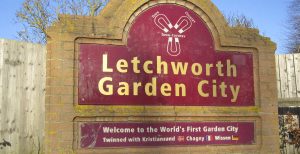
Image: Peter Moulton/Shutterwtock.com
Like most towns, Letchworth Garden City has joined the craze. They are twinned with:
Kristiansand, Norway in the 1960s
Chagny, France in 1978
Wissen, Germany in 1983
Top Attractions in Letchworth Garden City
Thinking of visiting Letchworth for a holiday, staycation, or a long weekend? We can testify that it is a lovely place to spend some time. Here are the top attractions of the area that you should try to see if you are visiting.
Historic Sites and Landmarks
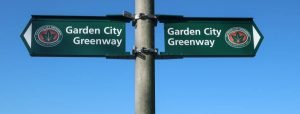
Image: Peter Moulton/Shutterstock.com
Most of the town is green belt or a system of pathways that interacts with the green belt. There are no hyper built-up areas in Letchworth, which is great for the plants, the animals, and the people that use the town. The greenbelt areas that stretch all the way around the town is a local landmark that is accessible by a series of pathways and scenic walking routes. Locals call this the Greenway and often use it for bike riding.
Come all the way to Letchworth and see the UK’s first-ever roundabout built for traffic. That’s right, this is the town responsible for your spending hours in traffic every day. Go see it, spit on it, give it a kick, and remember that it both saves thousands of lives each year and cuts down traffic emissions. Hate it but hate it with love. We are just saying… The Romans managed to conquer half the world without the addition of roundabouts. Whatever.
Galleries and Museums
There are a few galleries and museums to check out in Letchworth. The most prominent art gallery is the Broadway art gallery. It does a lot of work within the community, encouraging family interactivity in a wholesome way. They offer the Garden City Arts Club somewhere to hang out, they have an artist in residence, and they run regular exhibits on both fine art and local artworks. There are lots of sculptures here, so it covers a wide array of art mediums.
There is a museum in town, called the International Garden Cities Exhibition and it is set inside the quaintest cottage with a thatched roof. This museum commemorates the garden city and charts out the timeline of the town’s history. It is a local treasure.
The town sports many galleries, the Norton Way Gallery is another to look out for. The relaxed and countrified atmosphere the layout of this city encourages helps create and maintain this artistically woke community. Norton Way Art Gallery in Letchworth is a fine and contemporary art gallery. They regularly run exhibitions to rival that of Broadway. This gallery is open for private appointments, should you wish for a more intimate experience.
Outdoor Attractions
One of the top attractions in Letchworth Garden City is Norton Common. This area of natural beauty is run by the North Herts Council body. It is a local nature reserve, packed with green space, endless long walks, lines of gorgeous oak trees, forest, meadow, waterway, and more. It is the best place for a nature walk but it does get busy in high summer when the whole town turns out to sunbathe on it. The downside of being an English country town with no beach.
Once you have finished with the common, you can take the kids to the Standalone Animal Farm. This lovely place sports 125 acres of farm map for you to explore. It has a farm filled with animals perfect for petting, and a café that’s perfect for recovering your strength after all the excitement. Go at the right time of year and they might let you feed some baby animals. They have an outdoor playground area for the younger ones and some forest walk areas to explore. It’s an interactive and fun day out for families in Letchworth.
Last on the list of ideal outdoor attractions in Letchworth is the Howard Park and Gardens. Again, you want somewhere to sunbathe in late August, this is your place. They have a lovely play area outside for the kiddies. There’s a small café with picnic tables and there’s often a full paddling pool for the little ones to use. Named for Ebenezer Howard, the park and gardens are central to the plan of the town. There is also a bowling green and a formal garden with floral displays, too.
Sports and Recreation
The local sports and leisure centre has hall hire and everything you need in terms of sports. They have a fitness suite and changing rooms, mirrored dance studios, a café, and a swimming pool.
The local football team is Letchworth Eagles YFC, established in 1979. They play at the County Grounds for Hertfordshire.
Letchworth has its own golf club but this is England, so you can choose the par 3 course, instead. The par three course is best for young families and learners.
Shopping and Retail
There are not many big built-up areas in town and that means the shopping is laid back and easy here. The best shops are in the town centre or spread out around the surrounding streets. The best of the few shopping centres you will find in this area of Hertfordshire is the Garden Square Shopping Centre in the middle of town. The fountains are quite impressive.
Other Notable Attractions
As if all the above wasn’t enough already, we went and researched the other attractions in Letchworth Garden City, just for you. Here’s what we found in the surrounding areas, and a few of the attractions that are less popular among tourists.
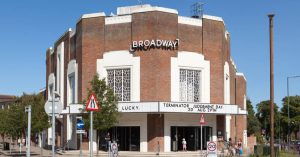
Even the Cinema is an architectural delight!
Image: AC Manley/Shutterstock.com
- Letchworth has endless options in galleries. Visit the Wynd Gallery if you want more of them.
- Visit the Broadway Cinema to eat popcorn and watch a movie.
- There is an outside pool in Letchworth that you can use on sunny days. It freezes in January.
- Annie’s Chocolate Emporium in the heart of town is a tourist destination we would sacrifice an arm for.
Let’s move on to the last thing on our list for the day… how in the Hell do you get to Letchworth Garden City, anyway?
How To Get There
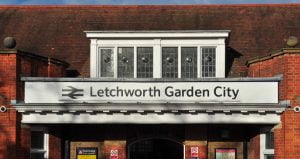
Image: Peter Moulton/Shutterwtock.com
To get yourself to Letchworth Garden City, you can try following our directions below. We recommend you use a sat-nav system if driving.
By Road
Letchworth is on the A1(M), watch out for the signs.
By Rail
You are looking for Letchworth Garden City Station on the Great Northern line.
By Air
The nearest airport is London Luton Airport.
By Sea
You are landlocked in Letchworth.
Got Five Minutes?
If you have a free five minutes and you enjoyed this guide then we need your support! Every like, follow and share that we get helps us to grow our expansive list of town guides so that we can bring every traveller in Britain a better experience. Check out some other town guides on our site or like us on Facebook to do your part.
